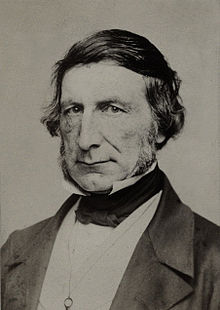I genuinely don't know why you two still discuss this. Its clear you have fundamental disagreements over both historical and ahistorical interpretations of the period in general and of a war between the US and UK during the period, so much so that you're never going to come to consensus or sway the other.
You've both created fantastic timelines that are fascinating and (in my mind) both feasible. is it best to just live and let live at this point, given how sweeping the disagreements are and how long the discussion has gone on for?
At this point you'll have to ask TFSmith. He evidently takes issue with my interpretation, and chooses to criticize it. I'm merely showing my research and thinking.
If he's content to continue the discussion maturely he's free to do so. I may or may not respond to him depending.
Outnumbered? Yes.
Quantity has a quality all of its own, after all.

Hmm going by numbers alone the historical example provides quite a few bits of evidence where quantity versus quality has failed rather spectacularly.
Queenston Heights, Lundy's Lane, Chateauguay, 1st and 2nd Lacolle, or for more contemporary examples, Inkerman, Pea Ridge, Second Bull Run, Fredericksburg, Chancellorsville, and Cold Harbor seem pretty instructive where an army on the offensive outnumbering its opponent doesn't do so well.
So in a scenario where the British and Canadians are on the defence, using the historical precedent of the previous invasions and the 1860s in general does not fill one with overwhelming confidence in an easy invasion.
And by extension, outgunned? Also yes.
In terms of number of guns brought to bear, yes. The quality of those guns is so debatable that I'm content to ignore it without historical precedents applied by others.
And given the relative performance of the British and US armies (since there wasn't a Canadian army, since there wasn't a Canada, after all) in the period?
This is again incredibly debatable. Britain, without exception, won every major conflict they entered into in the 1850s-60s.
America won the only major conflict it entered into in the 1850s-60s.
A side by side comparison would show stunning incompetence on either side, and a few generally exceptional leaders. I'm really not prepared to pronounce overwhelming superiority to one side over the other.
Pretty clearly out-generalled as well, and so the quantity and quality equation vs. lack thereof certainly comes into play.
Considering the stellar leaders available to immediately lead any proposed invasion of Canada ranges from men like Pope to Burnside, I'll let their own legacies speak for them.
But more importantly, what started this particular latest discussion was your estimate of 70,000 mobilized BNAers; given the historical percentages in the US at this very same time, either the US "should" get more troops than historically to match, or the BNAers should get less, unless, of course, you are asserting a voluntary mobilization in BNA in the 1860s would somehow produce more men per thousand then a voluntary mobilization in the US in the 1860s...
This of course makes zero sense. Why should I give the US more than they had historically? There's no compelling reason that they are capable of arming and equipping 500,000 more men than they had historically. ITTL I already posited a further 100,000 men joining the colors. That means they're getting close to hitting the limit of men they were able to arm absent imported weapons. It's just not possible to do.
Then of course we hit the issue of the differences between a voluntary mobilization in Canada and the US. There's no internal divisions worth the name in Canada to prevent a gradual rallying of men around the flag. Going by the historical military excitement that gripped the colony from 1855-1861 and the first and second hand sources describing the attitudes of the Canadians themselves.
Assuming the same number of volunteers in March 1862 (14,000) plus the call out of the sedentary flank companies (38,000) goes as planned (and as the first and second hand sources describe we have no reason to believe this isn't the case) then by March 1862 that's 52,000 men under arms. The next 20,000 men comes from my estimation that the British would put pressure on the Canadians to call out more members of the sedentary militia to form garrison troops for important points and the lines of communication. Given the already existing surge of patriotism from the threat of invasion, then the arm twisting from the imperial government and the skills of the Canadian politicians at the time, this seems like something that is perfectly possible.
ALists of names on county clerk's registers were just that, north or south of the US-BNA border; given that there are not any records of how many BNAers actually showed up in the winter of 1861-62, since there actually weren't any mobilizations, there isn't any hard information as to how many might have shown up if the balloon went up - it is interesting, however, that in an official British war office publication, published at the time, the total number of volunteers and militia combined listed for the province is roughly ~25,000.
The bolded is of course the most salient point. Though as the firsthand sources like Vansittart, Somerville, the 1862 Commissioners, and John A himself show, there was absolutely no doubt by the people in power or on the ground that the mobilization numbers they imagined were feasible. That the secondary sources like Bourne, Stacey, Preston, Hitsman, and Bokio agree with that idea, then I'm fairly confident in my assumption.
I place more faith in accredited historians personally.
And that's without conscription, of course.

I've probably explained to you at least 3 times why conscription would be both unthinkable and unneeded in any 1860s conflict in Canada. You're clearly content to ignore that argument, so I don't think this merits discussion.

